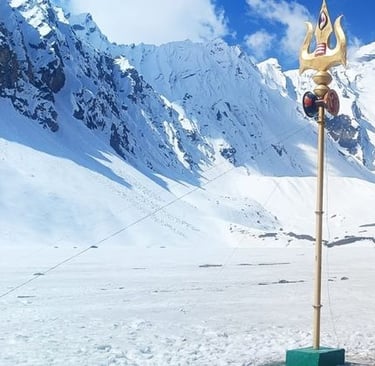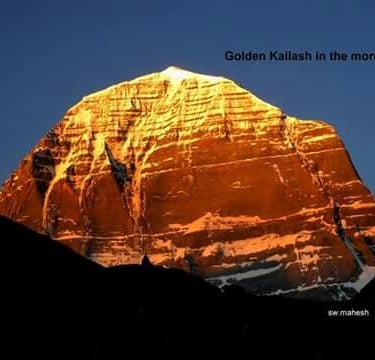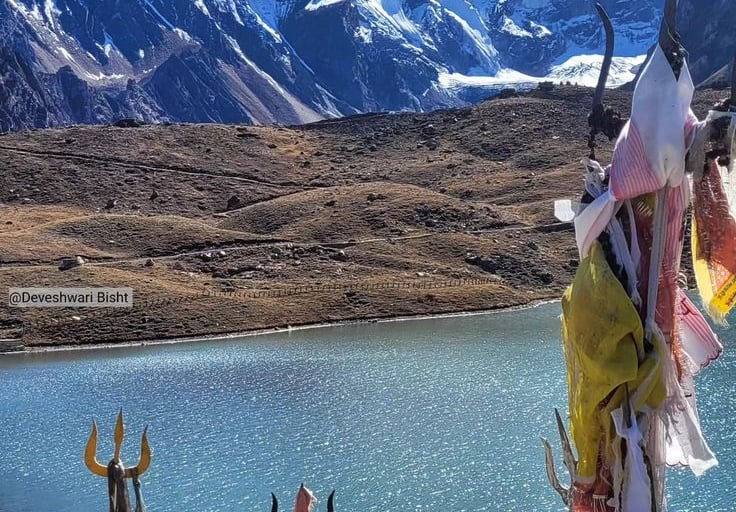Kailash Parvat- sacred place
Situated in the remote regions of the Tibetan Plateau, Mount Kailash stands tall at 6,638 meters. It is revered in Hinduism, Jainism, Buddhism, and Bon traditions, but for Hindus, it holds unparalleled importance as the sacred abode of Lord Shiva and Goddess Parvati.
RELIGION
1/25/20254 min read


Kailash Parvat: The Abode of Shiva and the Essence of Spirituality
Kailash Parvat, also known as Mount Kailash, is not just a mountain—it is a profound spiritual beacon, a symbol of cosmic harmony, and an enduring mystery to humankind. Situated in the remote regions of the Tibetan Plateau, Mount Kailash stands tall at 6,638 meters. It is revered in Hinduism, Jainism, Buddhism, and Bon traditions, but for Hindus, it holds unparalleled importance as the sacred abode of Lord Shiva and Goddess Parvati. This article delves into the religious, scientific, historical, and cultural significance of Kailash Parvat and why every Hindu should make a pilgrimage to this divine place.
Religious Significance of Kailash Parvat
The Abode of Lord Shiva
According to Hindu scriptures, Mount Kailash is the celestial home of Lord Shiva, the destroyer of evil and the transformer in the Trimurti (Brahma, Vishnu, and Mahesh). It is believed that Shiva resides here in eternal meditation along with Goddess Parvati, his consort. The mountain is regarded as the axis mundi (the center of the universe) that connects the earth to the heavens.
The Shiva Purana describes Kailash as:
"कैलासः शिखरं दिव्यं उपास्यते महामुनिभिः।
तत्रस्थो भगवान् रुद्रः प्रसन्नानुग्रह-प्रदः।"
(Shiva Purana 1.1.19)
This translates to: "The divine peak of Kailash is worshipped by great sages. There resides Rudra (Shiva), bestowing blessings upon those who seek him."
Spiritual Energy of Kailash Parvat
The mountain is considered a cosmic power point where divine energies converge. Devotees believe that circumambulating (parikrama) the mountain cleanses one’s karma and leads to liberation (moksha). Unlike other Hindu holy places where clockwise circumambulation is practiced, Kailash is circumambulated in an anti-clockwise direction by followers of the Bon religion, showcasing its universal spiritual appeal.
Connection to Mansarovar Lake
Located near Kailash Parvat is the serene Mansarovar Lake, believed to be created by Lord Brahma. The name "Mansarovar" is derived from two Sanskrit words—manas (mind) and sarovar (lake)—indicating that the lake was formed in Brahma’s mind before manifesting on Earth. The water of Mansarovar is considered holy and is believed to purify the soul, washing away the sins of countless lifetimes.
Historical Significance
The Churning of the Ocean (Samudra Manthan)
Hindu traditions, describes that the mountain played a crucial role during the churning of the ocean (Samudra Manthan). Mount Mandara, used as the churning rod, is often symbolically associated with the grandeur of Mount Kailash, representing the cosmic pillar around which the universe revolves.
Pandavas’ Journey to Heaven
In the Mahabharata, the Pandavas journeyed towards Kailash during their final ascent to heaven (swargarohan). It is believed that Kailash serves as a gateway to the divine realms.
Jain and Buddhist Perspectives
In Jainism, Mount Kailash is known as Ashtapada, the place where the first Tirthankara, Rishabhanatha, attained liberation. In Buddhism, the mountain is considered the residence of Demchok, representing supreme bliss.
Scientific Mysteries of Kailash Parvat
Mount Kailash is an enigma for scientists and researchers due to its unique geographical and geological properties:
Unclimbed Summit: Despite being lower in altitude than Mount Everest, no one has successfully scaled Kailash. Climbers report unusual weather patterns and physical exhaustion near the summit, further adding to its mystical aura.
Pyramid-like Structure: The mountain has a symmetrical pyramid shape, making many speculate it might be a man-made structure or a naturally formed cosmic antenna.
Energy Fields: Studies and testimonies from travelers suggest that the region emits powerful electromagnetic energy, aligning with ancient Hindu beliefs that Kailash is a spiritual energy center.
Connection to Mansarovar: The Mansarovar Lake is one of the highest freshwater lakes in the world. Its water remains mysteriously clear and still, reflecting the surrounding landscape like a mirror, which devotees associate with divine purity.
Why Every Hindu Should Visit Kailash Parvat
A Path to Moksha: Kailash is considered the spiritual gateway to liberation. The Parikrama of Kailash and a dip in Mansarovar Lake are said to absolve one of sins and free them from the cycle of birth and death.
A Divine Experience: The sheer spiritual energy and tranquility of the place make it a life-changing experience. Standing before Kailash, one feels a connection with the divine and a sense of being one with the cosmos.
Cultural Legacy: Kailash and Mansarovar have been celebrated in Hindu scriptures, songs, and rituals for millennia. Visiting this sacred place is akin to connecting with the roots of Sanatana Dharma.
Practical Details for Pilgrimage
The Kailash Mansarovar Yatra, organized annually, is a physically demanding pilgrimage requiring rigorous preparation. Pilgrims typically undertake the journey via Nepal or China (Tibet). Despite the challenges posed by high altitudes and rugged terrains, millions of devotees embark on this sacred journey every year.
Shlokas and Blessings from Shiva
Pilgrims often recite shlokas dedicated to Lord Shiva while undertaking the Kailash Yatra. One of the most common prayers is the Maha Mrityunjaya Mantra, which offers protection and blessings:
"ॐ त्र्यंबकं यजामहे सुगंधिं पुष्टिवर्धनम्।
उर्वारुकमिव बन्धनान् मृत्योर्मुक्षीय मामृतात्।"
(We worship the three-eyed Lord Shiva, who nourishes and nurtures all beings. May he liberate us from the bondage of worldly attachments and death, granting us immortality.)
Conclusion
Kailash Parvat is not merely a mountain; it is a spiritual powerhouse, a symbol of divine presence, and a reminder of the infinite possibilities of human existence. For Hindus, visiting this sacred place is a journey of faith, devotion, and self-discovery. It unites the physical, spiritual, and cosmic dimensions of life, offering a glimpse of moksha—eternal liberation.
As Swami Vivekananda beautifully said, “The goal of life is not the knowledge of the mysteries of creation, but to realize the mystery of our own existence.” A pilgrimage to Kailash Parvat is a step toward that realization.



